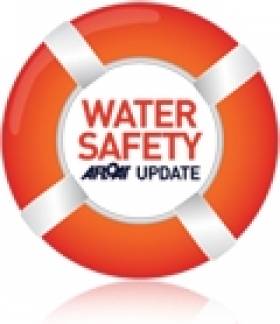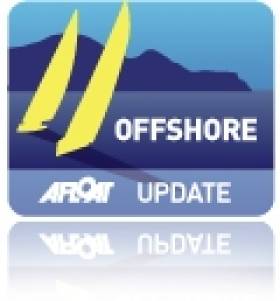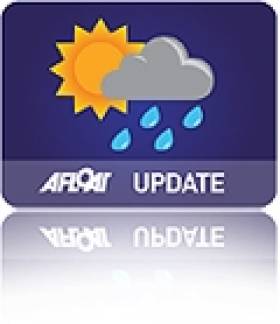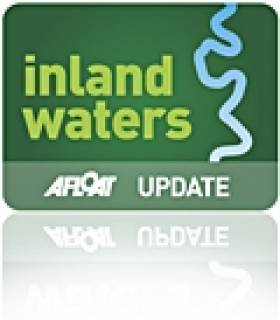Displaying items by tag: Smartphone
Luxury Yacht Charter Just A Swipe & Click Away With New Smartphone App
#Superyacht - For those with the cash to splash, chartering a superyacht for a luxury getaway or exclusive party has never been easier thanks to a new smartphone app that makes the process a simple matter of swipe and click.
Mail Online has more on the YPI Selection app from Yachting Partners International - one of the world's biggest yacht brokers - which lists the nearest vessels available to charter, with full details on their specs, including photo galleries.
But perhaps the biggest hook of the app is the ability to book time on board some of the most lavish boats in the world directly from your phone or tablet.
Of course you'll need to be among the "ultra-high net worth individuals" the app is aimed at, with charter rates starting at £25,000 (€31,500) a week, going up to an incredible £750,000 (€946,000).
That's a rate that would make even Eddie Jordan blush, with his so-named 155-foot Sunseeker superyacht available to charter from a relatively modest €200,000 a week.
VHF Smartphone Case Could Be A Real Lifesaver
#WaterSafety - A new case that turns a smartphone into a VHF radio could revolutionise safety on the water, as the Irish Examiner reports.
The VHF Casemate is the brainchild of Dublin-based product designer Seán Toomey, who developed the idea as his degree thesis at the Dublin Institute of Technology.
As he explains, it's a solution to the problem of boaters taking mobile phones out on the water as their only means of communication, despite poor network coverage even a short distance from the shore.
His design, which offers all a standard waterproof case provides, comes with a built-in VHF radio operated by app that also signals distress to any other vessels in the vicinity.
And it could soon be on the market, once Toomey finds a partner to help put his final design into production.
The Irish Examiner has more on the story HERE.
New Smartphone Apps For Smart Sailing
#SailingApps - Two new smartphone apps are just the ticket for anyone looking for an easy-to-use reference guide while out on the water as this summer's sailing season gets into full swing.
Safe Skipper - for iOS and Android devices priced €2.69 (with a free version also available) - touts itself as an "essential quick reference" app intended for everyone who goes to sea, whether sailing or in powerboats.
The app is divided into three main sections. The 'preparation' section includes details and tips on doing engine and rigging checks, overboard drills and weather and tidal updates. The 'safety' section covers necessary equipment from anchors to flotation aids, and communications guides on AIS, VHF radio and even Morse code.
Finally, the 'distress and emergencies' section details plans of action in the event of dismasting, engine failure or fire, medical emergencies and abandoning ship.
Safe Skipper is illustrated by RYA qualified yachtsman Simon Jollands, providing clear instructions for whatever issue you might have while afloat.
Meanwhile, SailingApp (for iPhone, priced €5.49) is "built from the water up for sailors by sailors".
The dual-function app is split between tools - allowing sailors to make on-the-fly calculations and checks for such things as anchor rode - and topics essential for good seamanship practices available with a single click.
Users who download SailingApp before 31 May will also receive any future updates to the app free of charge.
Smartphone App Helps Boat Lost in Fog
#Smartphone - A yacht managed to avoid collision with a container ship off the coast of South Africa recently - thanks to a smartphone app.
As Yachting Monthly reports, Ian Engelbrecht and crew Ibolya Palko were delivering a catamaran from Cape Town to Durban when they were trapped in thick fog not far the coastline.
When their primary AIS system stopped working, Engelbrecht turned on a smartphone app called Boat Beacon as a way to alert them to any other ships in the vicinity.
The app did its job, alerting the pair to a container vessel travelling in the opposite direction, though they were unsure of what corrective action to take due to the poor visibility and not knowing the closest point of approach (CPA).
Despite this, collision was averted - and the incident has prompted the app developers to add a CPA bearing feature to their product.
Yachting Monthly has more on the story HERE.
Met Éireann Launches New iPhone Weather Update App
#Weather - Met Éireann has developed a new smartphone app providing up-to-date weather forecasts for those on the go - especially on the water.
The new app features the latest reports, radar information and satellite imagery with both local and provincial forecasts, with specific forecasts tailored to Ireland's sea area and inland lakes, coastal reports and ferry crossings as well as Atlantic charts.
Users can also adapt the app preferences for their specific location and needs, whether you're aiming to go boating in our inland waterways or go fishing off the coast.
The Met Éireann app is now on iTunes to download for the iPhone, and an Android version is also available.
New Mobile Guide to Lough Derg Trails
#INLAND WATERWAYS - A new mobile app that guides visitors around the trails of Lough Derg has gone live, the Clare Champion reports.
More than 20 trails are included in the app, from walking to cycling, driving, cruising and canoeing.
The app - developed in partnership between Shannon Development and US firm EveryTrail - uses Google Maps and the GPS system in smartphones to pinpoint trails near the user's location.
Users can download route descriptions, images and notes, get directions to the starting point and follow the the pre-plotted course.
The Lough Derg Trails app is available for iPhone and Android devices.
The Clare Champion has more on the story HERE.


































































